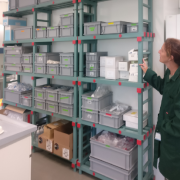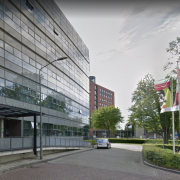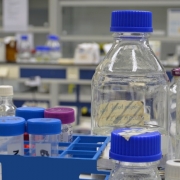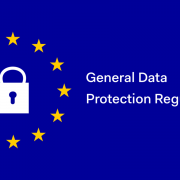The road to zero: banning CMR substances!
The road to zero
Tijdens WOTS 2018 was er een lezingenprogramma over “Veilig werken op het lab”. Bij uitstek een onderwerp voor de Lab Servant uiteraard. Diana Martens van Inspectie SZW gaf een toelichting op het beleid van de overheid om CMR-stoffen uit te bannen: the road to zero.
In haar slideshow kwam naar voren dat er alleen al 2700 sterfgevallen per jaar zijn door werkgerelateerde kanker. Dat is ruim 4 keer zoveel als het aantal verkeersdoden (2017: 613). Diana stelde “dat we dit niet normaal mogen gaan vinden”. Inspectie SZW zet dan ook vol in op vermindering van het gebruik van CMR-stoffen in de beroepspraktijk en wil daarin samenwerken met de branches. De eerste stap in die aanpak bestaat eruit om te inventariseren welke CMR-stoffen er “in huis” zijn, waarna in vervolgstappen de mogelijke blootstelling wordt beoordeeld en passende maatregelen worden genomen om blootstelling te verminderen.
In onze visie kan er nog een stap 0 aan vooraf gaan en dat is het voorkomen dat er CMR-stoffen worden besteld. De Lab Servant voorziet daarin door een check uit te voeren tijdens het orderproces. Daarbij worden CMR stoffen gesignaleerd op grond van H-zinnen en “signal lists”, zoals de CMR-lijst van het ministerie van SZW en de lijst met zeer zorgwekkende stoffen (ZZS lijst).
Diana Martens gaf tijdens haar lezing aan dat het STOP principe leidend is op dit moment: Substitutie, Technische maatregelen. Organisatorische maatregelen met Persoonlijke bescherming op de laatste plaats.
Het “uitbannen” van CMR-stoffen begint dus met Substitutie ofwel het vervangen door niet CMR-stoffen. Blootstelling aan gevaarlijke (CMR) stoffen staat voor 2018/’19 hoog op prioriteitenlijst van Inspectie SZW en het ministerie van SZW, maar ook bij andere departementen en in Europa. Dit betekent tevens dat bedrijven en instellinge gevraagd kan worden om verslag te doen van hun inspanningen om het gebruikvan en de de blootstelling aan CMR-stoffen te verminderen.
Lab Servant gebruikers kunnen die informatie snel en eenvoudig in een rapportage samenvatten met behulp van de Datamart tool.
The road to zero
During WOTS 2018 there was a lecture programme about “Working safely in the lab”. An excellent subject for the Lab Servant of course. Diana Martens of the SZW Inspectorate explained the policy of the government to ban CMR substances: the road to zero.
Her slideshow showed that there are about 2700 deaths per year due to work-related cancer. That is more than 4 times as much as the number of road deaths (2017: 613). Diana stated that “we should not accept this as normal”. The SZW Inspectorate is therefore fully committed to reducing the use of CMR substances in professional practice and wants to collaborate with the branches. The first step in this approach is to identify which CMR substances are “in-house”, after which in subsequent steps the possible exposure is assessed and appropriate measures are taken to reduce exposure.
In our view, there is still a step 0 to go before and that is to prevent CMR substances from being ordered. The Lab Servant provides for this by carrying out a check during the order process in which CMR substances are identified on the basis of H-phrases and “signal lists”, such as the CMR list of the Ministry of SZW and the list of substances of very high concern (SVHC list).
Diana Martens indicated during her lecture that the STOP principle is leading at the moment: Substitution, Technical measures. Organizational measures with Personal protection in the last place.
The “banning” of CMR substances therefore starts with Substitution or replacement with non-CMR substances. Exposure to hazardous (CMR) substances stands in 2018 / ’19 high on the priority list of the SZW Inspectorate and the Ministry of SZW, but also of other departments and “Europe”. This also means that companies and institutions can be asked to report on their efforts to reduce the use of and exposure to CMR substances. Lab Servant users can summarise such information quickly and easily in a report with the aid of the Datamart tool.






